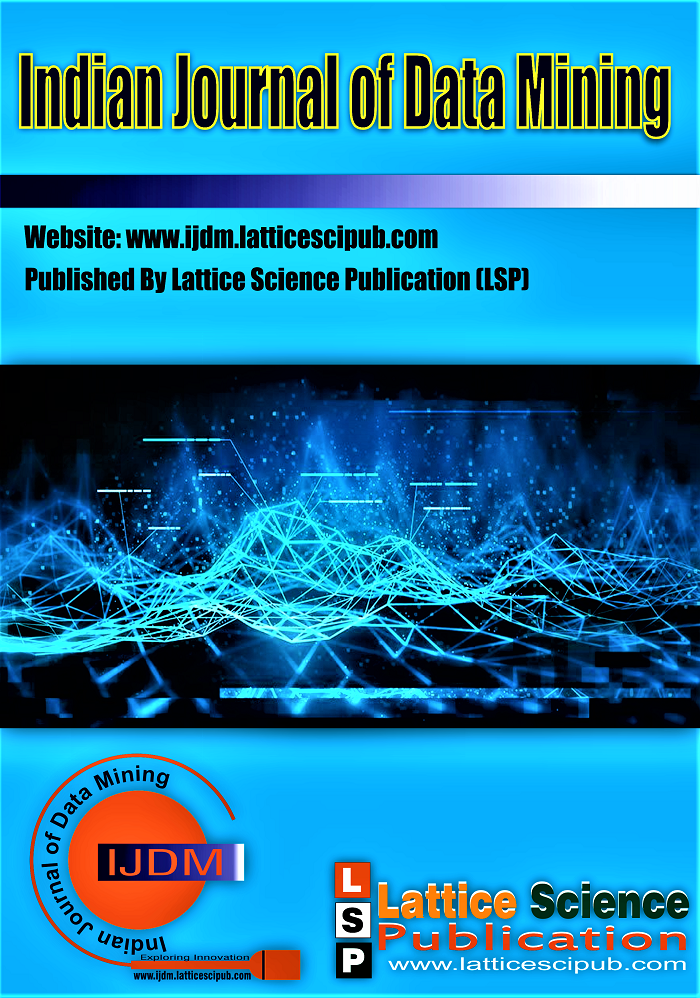Myers-Briggs Personality Prediction
Main Article Content
Abstract
The Myers-Briggs Type Indicator (MBTI) is one of the most commonly used tool for assessing an individual’s personality. This tool allows us to identify the psychological proclivity in the way they take decisions and perceive the world. MBTI has it’s applications spread across several fields which include career development and personal growth. This test consists of a set of questions which are specifically designed to evaluate and measure an individual’s choices based on four dichotomies – Extraversion (E) vs. Introversion (I), Sensing (S) vs. Intuition (N), Thinking (T) vs. Feeling (F), and Judging (J) vs. Perceiving (P). Myers-Briggs Personality Prediction project aims to develop and deploy a system using machine learning which is capable of predicting one’s MBTI personality type based on their online written interactions such as social media posts, comments, blogs etc. This project has significant implications for various applications, including improving customer experience, optimizing team dynamics, and developing personalized coaching programs. Through this project, we hope to gain a deeper understanding of how language use and personality type are related and to develop a robust tool for personality prediction.
Downloads
Article Details

This work is licensed under a Creative Commons Attribution-NonCommercial-NoDerivatives 4.0 International License.
How to Cite
References
Amirhosseini MH, Kazemian H. Machine Learning Approach to Personality Type Prediction Based on the Myers–Briggs Type Indicator®. Multimodal Technologies and Interaction. 2020; 4(1):9. https://doi.org/10.3390/mti4010009
Basto, Carlos. ‘Extending the Abstraction of Personality Types Based on MBTI with Machine Learning and Natural Language Processing’. ArXiv [Cs.CL], 2021. arXiv. http://arxiv.org/abs/2105.11798.
Bhagat, Ayushi and Aylani, Amit and Shahasane, Aditi and Shinde, Shraddha and Limaye, Heramba, Personality Prediction By Using Deep Learning On Twitter (April 9, 2023). Available at SSRN: https://ssrn.com/abstract=4413612 or http://dx.doi.org/10.2139/ssrn.4413612
Choong EJ, Varathan KD. 2021. Predicting judging-perceiving of Myers-Briggs Type Indicator (MBTI) in online social forum. PeerJ
:e11382 https://doi.org/ 10.7717/pe
erj.11382 https://doi.org/10.7717/peerj.11382
M. Maulidah, and H. F. Pardede, "Prediction Of Myers-Briggs Type Indicator Personality Using Long Short-Term Memory," Jurnal Elektronika dan Telekomunikasi, vol. 21, no. 2, pp. 104-111, Dec. 2021. doi: 10.14203/jet.v21.104-111 https://doi.org/10.14203/jet.v21.104-111
N. Cerkez, B. Vrdoljak and S. Skansi, "A Method for MBTI Classification Based on Impact of Class Components," in IEEE Access, vol. 9, pp. 146550-146567, 2021, doi: 10.1109/ACCESS.2021.3121137. https://doi.org/10.1109/ACCESS.2021.3121137
Ryan G, Katarina P, Suhartono D. MBTI Personality Prediction Using Machine Learning and SMOTE for Balancing Data Based on Statement Sentences. Information. 2023; 14(4):217. https://doi.org/10.3390/ info14040217 https://doi.org/10.3390/info14040217
Sakdipat Ontoum, Jonathan H. Chan. Personality Type Based on Myers-Briggs Type Indicator with Text Posting Style by using Traditional and Deep Learning. 2022; https://doi.org/10.48550/arXiv.2201.08717
Stein, R, Swan, AB. Evaluating the validity of Myers-Briggs Type Indicator theory: A teaching tool and window into intuitive psychology. Soc Personal Psychol Compass. 2019; 13:e12434. https://doi.org/10.1111/spc3.12434
Vignesh Ramachandran, Asad Loya, Kevin P. Shah, Shreya Goyal, Esha A. Hansoti, Andrew C. Caruso, Myers-Briggs Type Indicator in Medical Education: A Narrative Review and Analysis, Health Professions Education, Volume 6, Issue 1, 2020, Pages 31-46, ISSN 2452-3011, https://doi.org/10.1016/j.hpe.2019.03.002.(https://www.sciencedirect.com/science/article/pii/S245230111830124X)
Z. Mushtaq, S. Ashraf and N. Sabahat, "Predicting MBTI Personality type with K-means Clustering and Gradient Boosting," 2020 IEEE 23rd International Multitopic Conference (INMIC), Bahawalpur, Pakistan, 2020, pp. 1-5, doi: 10.1109/INMIC50486.2020.9318078. https://doi.org/10.1109/INMIC50486.2020.9318078
https://medium.com/@dolly19304/personality-predic tion-using-myers-briggs-type-indicator-56888416e87c
https://www.kaggle.com/datasets/datasnaek/mbti-type
Behera, D. K., Das, M., & Swetanisha, S. (2019). A Research on Collaborative Filtering Based Movie Recommendations: From Neighborhood to Deep Learning Based System. In International Journal of Recent Technology and Engineering (IJRTE) (Vol. 8, Issue 4, pp. 10809–10814). https://doi.org/10.35940/ijrte.d4362.118419
Nikam, S. S., & Dalvi, Prof. R. (2020). Fake News Detection on SocialMedia using Machine Learning Techniques. In International Journal of Innovative Technology and Exploring Engineering (Vol. 9, Issue 7, pp. 940–943). https://doi.org/10.35940/ijitee.g5428.059720
Wanjau, S. K., Wambugu, G. M., & Oirere, A. M. (2022). Network Intrusion Detection Systems: A Systematic Literature Review o f Hybrid Deep Learning Approaches. In International Journal of Emerging Science and Engineering (Vol. 10, Issue 7, pp. 1–16). https://doi.org/10.35940/ijese.f2530.0610722
Radhamani, V., & Dalin, G. (2019). Significance of Artificial Intelligence and Machine Learning Techniques in Smart Cloud Computing: A Review. In International Journal of Soft Computing and Engineering (Vol. 9, Issue 3, pp. 1–7). https://doi.org/10.35940/ijsce.c3265.099319
Kanani, P., & Padole, Dr. M. (2019). Deep Learning to Detect Skin Cancer using Google Colab. In International Journal of Engineering and Advanced Technology (Vol. 8, Issue 6, pp. 2176–2183). https://doi.org/10.35940/ijeat.f8587.088619





